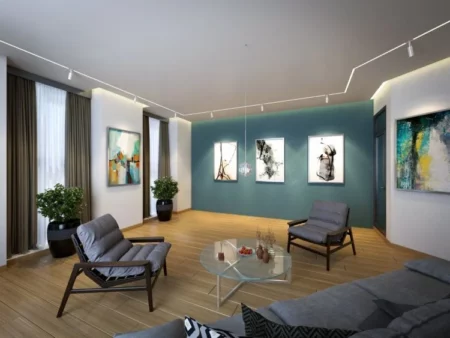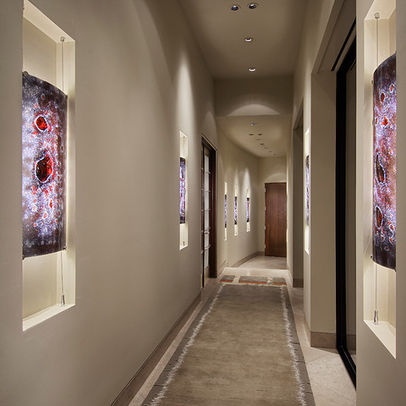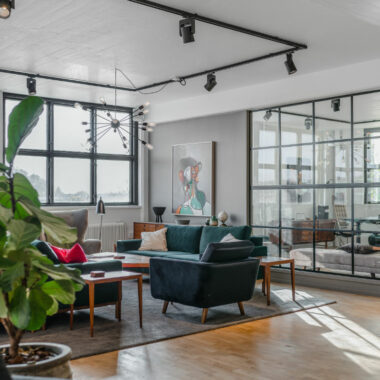Accent lighting plays a vital role in interior design, offering both functionality and emotional depth. By illuminating special features, drawing attention to key elements, and enhancing the ambiance, accent lighting can elevate any space. Whether you’re moving into a new home or revamping a room, well-planned lighting can turn a practical space into a visually appealing retreat.
If you’re new to lighting design, check out our guide Everything You Need to Know About LED Lighting: A Beginner’s Guide to understand how LED technology can enhance your accent lighting.
Here are five expert tips to help you design perfect accent lighting for your home.
Define Key Focal Points
Accent lighting is most effective when it highlights specific features in a room. Narrow down the areas or objects you want to emphasize:
- Architectural details like alcoves, moldings, or fireplaces
- Decorative pieces such as paintings or sculptures
- Functional areas, like entertainment centers or bookshelves
For example, placing wall sconces above a painting can add depth and showcase the artwork beautifully. In small spaces, consider accent lighting ideas like illuminating built-in shelves or alcoves to add character without cluttering the room.
Pro Tip: Use directional lighting (e.g., adjustable recessed fixtures or track lights) to focus light beams precisely and avoid harsh glare. Learn more in our article Everything You Need to Know About Track Lighting.
Layer Lighting for Depth
Combining accent lighting with task and ambient lighting ensures your room is both versatile and inviting. Layering lights helps create a cohesive atmosphere while providing flexibility for different activities.
Ideas for Layering Lights:
- Pair a table lamp with subtle accent lights in a reading corner for a cozy vibe.
- Combine recessed ceiling lights with a sleek floor lamp in bedrooms for added elegance.
Modern Accent Lighting Tip: Install dimmers to adjust light intensity, making it easy to shift between bright, functional lighting during the day and softer, mood-enhancing lighting in the evening.
If you’re looking for inspiration, read our guide How to Perfectly Place Lamps in Your Living Room.
Choose Fixtures That Complement Your Style
Fixtures are more than just functional; they’re integral design elements. Your lighting choices should align with your home’s aesthetic:
- Modern Spaces: Opt for integrated LED strips or sleek track lights.
- Traditional Interiors: Sculptural lamps or ornate pendant lights add a touch of sophistication.
- Compact Spaces: Use under-cabinet lighting or low-profile LED panels to save space without compromising style.
Creative Idea: Select fixtures that cast subtle patterns or shadows on walls, turning plain surfaces into unique design highlights.
Optimize Placement for Maximum Impact
Understanding how to plan accent lighting for living rooms is crucial for creating a balanced and visually appealing environment. The key is to position lights strategically to highlight specific features without overpowering the room. For instance, accent lights can be directed toward:
- Chairs and couches, creating cozy seating areas.
- Architectural alcoves or focal walls, adding depth and character.
- Fireplaces or entertainment units, enhancing their prominence.
For a deeper dive into placement strategies, explore our article Lighting Design Basics: Essentials for Every Home.
When considering the best accent lighting placement tips, focus on experimenting with angles and positions to eliminate harsh shadows and create a harmonious atmosphere. Recessed fixtures installed at varying heights can produce interesting patterns on ceilings and walls, making the space feel dynamic.
Additionally, hallways and pathways often benefit from subtle accent lighting, such as hidden LED strips or wall-mounted lamps. These elements not only guide movement but also bring a touch of elegance to transitional spaces.
Consider the Room’s Mood and Function
Accent lighting should reflect the purpose and mood of each room:
- Relaxing Spaces: Use soft lighting with warm tones in bedrooms or living areas for a cozy atmosphere.
- Functional Areas: Pair accent lights with task lighting in kitchens or home offices to maintain style without sacrificing visibility.
- Entertainment Zones: LED strips behind TVs or shelving create a glamorous effect while reducing eye strain.
In dining areas, soft glows from table lamps or pendants enhance the ambiance for meals and gatherings.
Bonus Tips for a Flawless Finish
- Size Up Your Space: Use lighting to make small rooms feel larger. For low ceilings, select fixtures that illuminate the ceiling and provide a sense of depth.
- Fill Shadows: Avoid leaving dark voids by using floor lamps or hidden fixtures, especially in hallways and bathrooms.
- Adjustability Matters: Invest in dimmable lights to tailor brightness levels to your mood or activity.
Final Thoughts
Accent lighting is both a creative and practical process. By focusing on key areas, layering light sources, and choosing fixtures that reflect your style, you can transform any interior into a unique and inviting space.
From accent lighting ideas for small spaces to planning for living rooms, these tips will help you achieve a perfect balance of functionality and aesthetics. Let your lighting showcase your home’s personality while making every room a standout feature.













